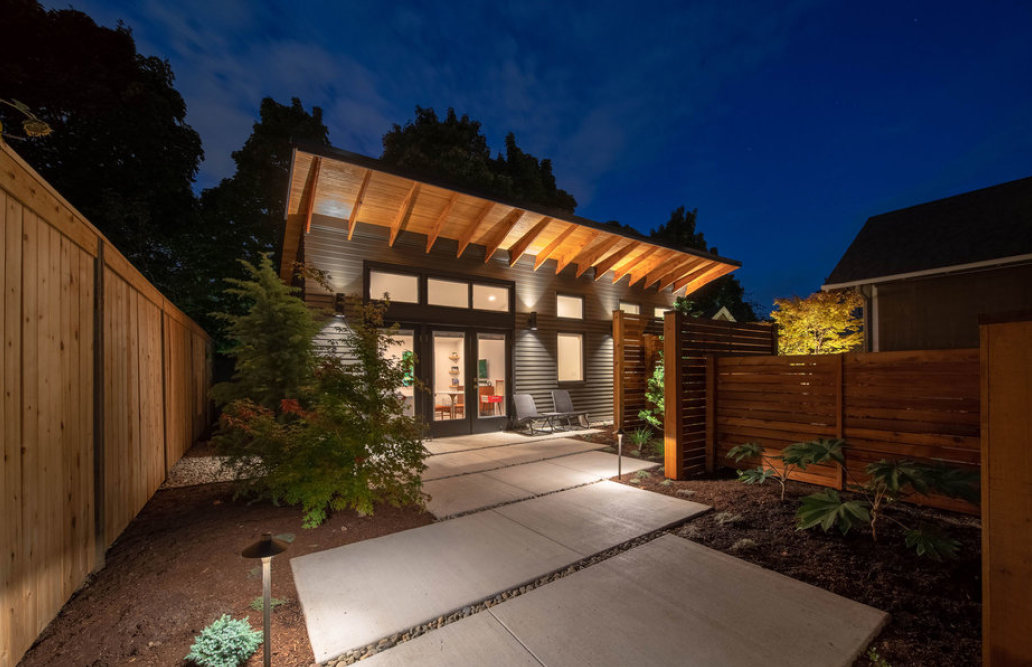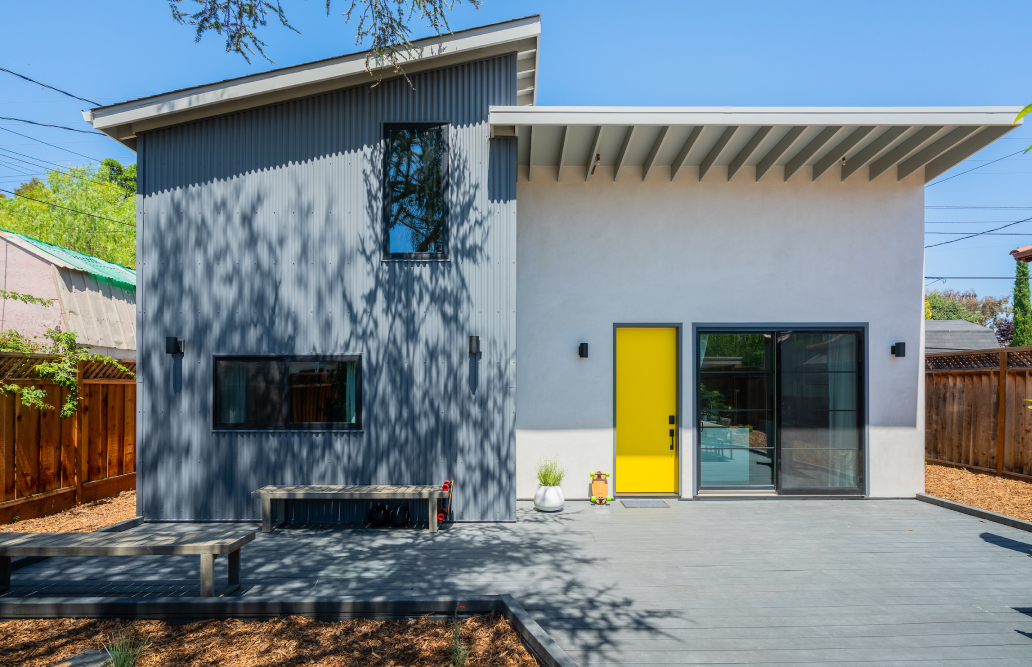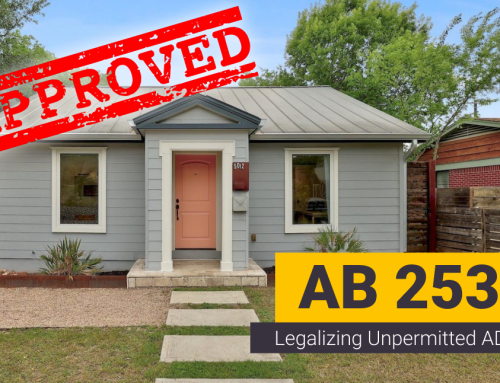Houston is fired up about accessory dwelling units! But what exactly are you allowed to build? Although some of the rules are set by local neighborhoods, there are citywide ADU regulations you should be aware of at the beginning of your ADU adventure.
There is no specific ADU ordinance in Houston. The city’s general code of ordinances refers to “secondary dwelling units,” and that is where you’ll find laws specific to ADUs. Otherwise, you’ll rely on the code for primary dwellings and the rules of your district, subdivision, or neighborhood.
Houston is trying to make the process of building an ADU easier for homeowners, in part by launching ADU|HOU to educate people about ADU financing, design, and construction.
Unlike other worthy housing initiatives in Houston, building an ADU is up to the individual homeowner. If there’s a housing crisis in your family or you want to make extra income from rent, you can get started right now!
Your first task as a potential ADU homeowner is to learn about the existing ADU regulations in Houston. Here are five of the most important ADU regulations.
1. Maximum size and setbacks for an ADU in Houston

ADU by Propel Studios
Your Houston accessory dwelling unit can be a maximum of 900 square feet. ADUs must contain a working kitchen and bathroom. They may be attached to the main house (as with a converted garage) or detached.
With 900 square feet, you can easily design a comfortable two-bedroom ADU. You might even be able to squeeze in a third bedroom or a second bath.
Most ADUs in Houston are between 500-600 square feet. The first 400 square feet of an ADU are the most expensive to build. Every ADU must contain a kitchen and bath, and those are the costliest rooms. Whatever size you’re considering, it’s worth asking your designer how much an extra bedroom would add to the overall price.
According to Houston ADU regulations, setbacks from the rear and side property lines for an ADU are a minimum of 5 feet. This is new as of 2022—it used to be 3 feet, but now it’s 5. Technically you’re allowed to build right up to the property line, but if you enter the 5-foot setback area, you’ll need a construction maintenance agreement from the planning department.
For instance, if your ADU’s overhang enters into that 5-foot space you could be required to install firewalls to protect your neighbor’s property from a fire that might break out in your ADU. These and other items on the construction maintenance agreement can get expensive, so most homeowners opt to obey the setback rules.
If there’s enough space on the lot, instead of taking the ADU right to the allowable setback you could add a few extra feet. Turn this space into a private patio or garden for the ADU. That’s valuable to renters, and small outdoor spaces can be sweet if you add a bistro table and some plants.
2. It’s legal to build an ADU in Houston unless your property has a deed restriction.

ADU by Goldbar Builders
There are currently about 8300 accessory dwelling units in the city of Houston, according to estimates from the Rice|Kinder Institute for Urban Research. You can build one too, unless your property has a deed restriction.
To find out, call the Harris County Real Property Records Office at 713-755-6411. For a small fee, they’ll send you a copy of the deed restriction for your property, if there is one. There is no online link to this office, you have to call them.
Deed restrictions are “private agreements and are binding upon every owner in a subdivision. All future owners become a party to these agreements when they purchase property in deed restricted areas,” states Houston’s Planning and Development Department.
The restrictions are meant to preserve a neighborhood’s residential character and prevent businesses from operating out of homes. They usually have a lifespan of 25-30 years, although some operate in perpetuity or renew automatically. A group of neighbors who agree they want to change the deed restriction can do it, but it may be a lengthy legal process.
What if you get a copy of the deed restriction and can’t tell exactly what it’s restricting? A real estate attorney can explain what’s allowed. Some deed restrictions let you build an ADU as long as you don’t rent it. If you’re building to house a relative, this could work out for you. It’s definitely worth it to know for sure what’s legally possible before moving ahead or deciding not to.
3. An ADU in Houston must have one off-street parking space

ADU by Mayberry Workshop
Houston ADU regulations state that every primary dwelling must have two off-street parking spaces. An ADU must have one off-street parking spot.
The primary home’s parking spaces can be tandem, meaning you can park one vehicle behind the other. The parking for the ADU must be separate. The reasoning is that folks living in the primary house can ask each other to move one of the vehicles, but the occupant of the ADU should be able to access their car at any time without bothering the people living in the main house.
In neighborhoods where lots are small, finding off-street parking space for three vehicles plus an ADU can be challenging. Many Houston homeowners opt to build an ADU over a garage or carport. This solves that problem, at least for two of the vehicles (or all three, if you design a large ADU/carport or enough driveway to tandem park two of the vehicles).
4. If you live in a Houston Historic District, your ADU design will need to match the style of the primary house
If you live in one of Houston’s 34 Historic Districts, you’ll need to apply for a Certificate of Appropriateness from the city’s Planning and Development Department. To gain that, your ADU design will need to match the original house in architectural style, exterior cladding, windows, colors, trim, and so forth.
Additionally, the ADU must not be more noticeable from the street than the original home.
Michael Shelton of Harvard Heights Construction explains, “Whether it’s the Historic Heights South, West, or East, or Germantown, or in the Mantras area, we have to copy what they have in the front and make sure that the second dwelling is not overwhelming but complements the first house.”
Houston Historic Preservation has an interactive map where you can check to see if your property is in a Historic District. The 34 districts include those on the National Register, the city register, and Heritage Districts.
5. Stormwater management is part of Houston ADU design

Many parts of Houston are in flood zones. This affects any kind of new construction, including accessory dwelling units.
New construction results in the natural flow of water being diverted by what city engineers call “impervious cover”. This includes your new ADU and its roof, which are impervious to water. Where water once flowed freely, it’s now being stopped or diverted somewhere else. Perhaps to a neighbor’s property or an alley sewer system that wasn’t originally designed to handle that much flow.
To be in accordance with Houston ADU regulations, ADU will need a stormwater management plan that includes a catchment area. This only applies if you live in a flood zone. This catchment area needs to be able to hold a specific volume of water, as well as a mechanism that allows the water to be released at a controlled rate to the city’s storm sewer system.
Similarly, Houston ADU regulations state that your ADU can’t block the flow of your neighbor’s stormwater off their property. If it does, or if water is diverted from your property to theirs, you are legally responsible for any resulting damage.
All this sounds serious but it’s not scary. Experienced designers are used to creating stormwater management plans. It’s all part of designing a building in Houston at a time when storms are becoming more frequent and severe.
Let Maxable be your ADU guide
Accessory dwelling units are an important piece of the solution to Houston’s housing crunch. At Maxable we’ve been helping homeowners plan, manage, and hire professionals for their ADU projects for years! We’ve built a deep archive of ADU videos, webinars, blogs, and free tools to demystify the process and give you the confidence and knowledge you need to get going.
Ready to get into the ADU trenches? Our comprehensive ADU e-course, The ADU Blueprint, will equip you with the necessary knowledge you need to overcome some of the most common obstacles we’ve witnessed. Get a free preview of the first lesson here!







